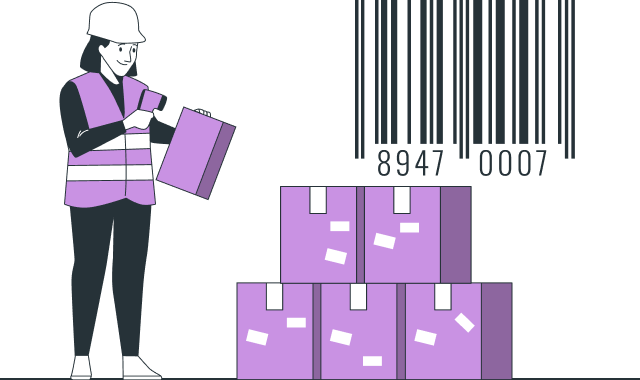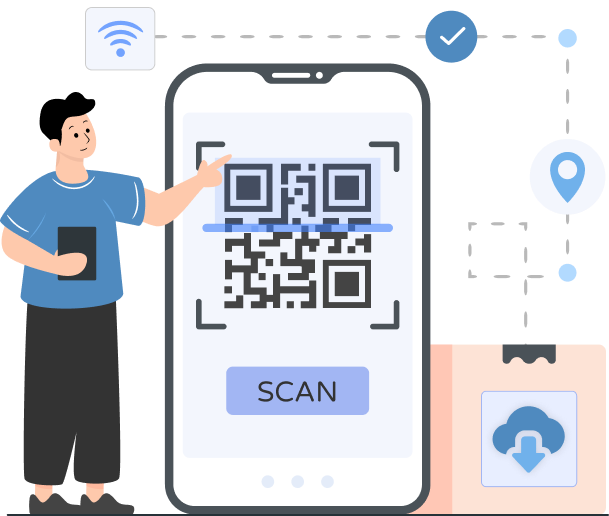Generate Unlimited Barcodes with Munim’s Barcode Generator
Create 1D barcodes for tracking and billing
What is a Barcode Generator?
A barcode generator is a tool that allows individuals to create barcodes easily. It facilitates users to customize barcodes for product labelling, inventory management, asset tracking, and more. Munim’s barcode generator tool opens the gateway for convenient and efficient ways for businesses to generate barcodes online.
Barcode Generators don’t need any specialised training or expertise. Without any training, you can generate various types of barcodes at scale. The barcode type typically depends on the application of the barcode.
Types of Barcode Generators
As far as the aspect of barcode generation is concerned, you will find that there are two major classes of barcodes: 1D Barcodes and 2D Barcodes. Knowing these two will enable you to make a decision on the type of barcode that can be used in your business.
1D Barcode Generator
1D barcodes are the old type of barcodes that you usually come across on products in stores. They are linear barcodes where information is stored in horizontal lines of varying thicknesses and spaces.
Types of 1D Barcode Generators
- Code-128 : Code 128 is the most popular 1D barcode format due to its compact size and the ability to store alphanumeric information. It can also code all the 128 ASCII characters that could be numbers, letters (upper or lower) and special characters.
- Code-11 : Code 11 is another 1D barcode code that is less frequently used, but still used in some industries. It is mostly used for encoding numeric data only, especially for inventory management.
- Code-39 : One of the most common 1D barcode formats used, particularly in the industrial setting, is Code 39. It is able to encode letters (A-Z) and numbers (0-9) as well as some special characters. It is commonly applied in asset tracking and inventory management.
- Code-93 : Code 93 is an improved version of Code 39, which offers more density and more characters in less space. It is capable of encoding alphanumeric data as well as a greater number of special characters, which makes it suitable for any application where a denser barcode is needed.
Features of 1D Barcodes:
Simple and easy to generate.
Best suited for products and items that require basic identification.
Often used in retail stores and warehouses for inventory management.
Can store a limited amount of information (usually up to 20 characters).
Use Cases:
Retail product labelling.
Library book management.
Warehouse inventory tracking.
2D Barcode Generator
The 2D barcodes are more sophisticated than the 1D barcodes. With respect to 1D barcodes, the 2D barcode stores data horizontally and vertically, which means that the 2D barcode can store significantly more information. QR codes and DataMatrix codes are the most frequent 2D barcodes.
Types of 2D Barcode Generators
- QR Code : One of the best-known forms of 2D barcodes is QR (Quick Response) Codes. They can be used to store many kinds of data, such as the URL of websites, contact details, and even payment details. QR codes are getting more popular, particularly in online marketing, payment services and mobile apps.
Features of 2D Barcodes:
Store more data (alphanumeric data, URLs, or even images).
Often used in digital marketing for campaigns.
It can be scanned using a smartphone camera or barcode scanners.
Used for tracking and labelling in industries like pharmaceuticals, logistics, and marketing.
Use Cases:
Marketing campaigns (QR codes linking to websites).
Medical and pharmaceutical products.
Event ticketing and boarding passes.
How to Use a Barcode Generator
Here are the step-by-step instructions to use Munim’s barcode generator online :
Perks of Leveraging Munim’s Barcode Gen
Access our online barcode generator at any time and from anywhere.
It is easy-to-use and generates barcode with just few clicks.
It is free-to-use and doesn’t require any subscription cost.


Download Barcode
It is easy to download generated barcodes from the Munim barcode generator. Once you have generated your barcode online, it is possible to download it in various formats, including PNG and SVG. Make sure you download the barcode in the right format according to your requirements, whether you want to print it on a label, to use it in a product catalogue or integrate it into your website. SVG format is recommended so that the graphic designers can easily fit it in the required size.
How to Choose the Right Barcode Generator
Deciding on the appropriate barcode generator code to use in your business might be hectic, considering the available alternatives in the market. The following are the things you should remember before choosing the right barcode generator online
What Else Do we Offer?
We also have a QR Code Generator for You

Upgrade your Financial Journey with Our Accounting Software!
Frequently Asked Questions (FAQ)
How to generate barcodes?
Here is the step-by-step procedure to generate barcodes:
- Choose an appropriate barcode generator
- Select the barcode type
- Enter the data such as price, SKU or ID
- Generate the Barcode
- Download the barcode



